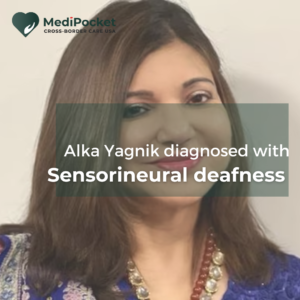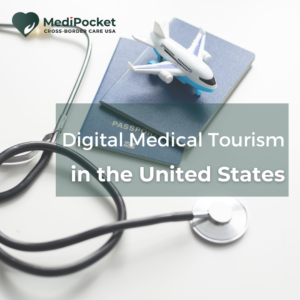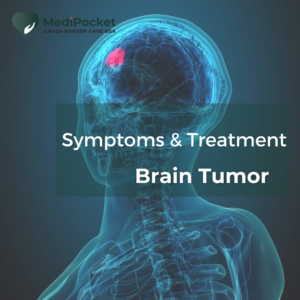Adenoid cystic carcinoma (ACC) is a rare kind of cancer that can affect the head and neck, breast, and other areas of the body. It develops from glandular and epithelial cells and grows slowly yet aggressively. The name adenoid cystic carcinoma comes from the way it appears under the microscope. The tumor cells are organized in tiny, spherical clusters that look like Swiss cheese.
While the exact etiology of ACC is unknown, it is thought to be caused by genetic abnormalities in the cells that induce excessive cell growth and division. Exposure to radiation, environmental pollutants, and a family history of cancer are all risk factors for Adenoid cystic carcinoma.
How does Adenoid cystic carcinoma spread?
Adenoid cystic carcinoma (ACC) can spread both locally and far. Cancerous cells have the ability to infect adjacent tissues and structures such as nerves, blood vessels, and bone. In the afflicted regions, this might cause pain, numbness, or weakness. ACC may expand to surrounding lymph nodes in some cases, raising the risk of recurrence and metastasis.
As cancer cells break out from the main tumor, they travel to other regions of the body via the bloodstream or lymphatic system. The lungs, liver, bones, and brain are the most prevalent sites of distant metastases for ACC. As Adenoid cystic carcinoma spreads to these organs, it can cause shortness of breath, stomach pain, bone pain, and headaches.
It’s crucial to remember that the rate and pattern of ACC spread might vary based on the tumor’s location and size, as well as other factors including the patient’s age, overall health, and genetic make-up. As a result, effective diagnosis and therapy are critical for preventing or managing the development of ACC.
Which body part is affected by adenoid cystic carcinoma?
Adenoid cystic carcinoma can arise everywhere in the body, but it most usually affects the salivary glands, particularly the parotid gland in front of the ear. It can also affect the breast, lacrimal gland, skin, and respiratory tract, which includes the trachea, bronchi, and lungs. It can happen in the prostate gland or the vulva.
Adenoid cystic carcinoma in the salivary glands often manifests as a slow-growing tumor or lump that is painless and situated deep inside the gland. It can produce symptoms such as coughing, wheezing, shortness of breath, and chest discomfort in the respiratory system. It might manifest as a breast lump or an abnormal mammography in the breast. Symptoms and presentation may differ.
Symptoms
Adenoid cystic carcinoma (ACC) can develop in several areas of the body, with symptoms varying according to the location and size of the tumour. Following are some of the most prevalent ACC symptoms:
Swelling or lump: A painless lump or swelling that increases steadily over time is the most typical sign of ACC. It can be felt beneath the skin as well as in deeper tissues.
Pain: ACC can produce pain or discomfort in the afflicted region, depending on the location of the tumour. If the tumour is in the salivary gland, for example, it might cause pain during chewing or swallowing.
Numbness: Numbness or tingling in the afflicted area might occur if the tumour pushes on nerves.
Vision issues: If the tumour is close to the eye, it can cause vision issues such as double vision or vision loss.
Facial weakness: When a tumour affects the facial nerves, it can produce weakness or paralysis on one side of the face.
Hoarseness: If the tumour affects the larynx, hoarseness or trouble speaking may occur.
Breathing issues: If the tumour is located in the trachea or bronchi, it might cause breathing difficulties.
Is adenoid cysts carcinoma fatal?
Adenoid cystic carcinoma (ACC) is a slow-growing malignancy with varying prognoses based on the location of the tumor and its stage when discovered. While being classified as a malignant cancer, ACC is not always deadly, and survival rates vary greatly.
The five-year survival rate is projected to be 89%, while the ten-year survival rate is expected to be 70%. Because the precise life-span of those affected by this malignancy is unknown, the exact number of years and percentage are simply estimates.
Diagnosis of Adenoid cystic carcinoma
Adenoid cystic carcinoma is often diagnosed by a series of processes. The doctor will first undertake a physical examination to look for any tumors or anomalies in the afflicted region. They may also require a medical history as well as imaging tests such as an ultrasound, MRI, or CT scan to provide a more complete picture of the tumor’s location, size, and spread.
Biopsy
To confirm the diagnosis of adenoid cystic carcinoma, a biopsy is routinely conducted. A pathologist examines a little tissue sample extracted from the tumor under a microscope to search for the presence of malignant cells during a biopsy.
Blood test
Further tests, such as blood tests, chest X-rays, or PET scans, may be conducted in some circumstances to look for symptoms of cancer.
Because adenoid cystic carcinoma can be comparable to other forms of cancer, such as other salivary gland tumors, it is critical to get a comprehensive review by an expert specialist.
Treatment
Surgery, radiation therapy, and chemotherapy are commonly used to treat adenoid cystic carcinoma (ACC). The particular treatment strategy is determined by the cancer’s location and stage, as well as the patient’s overall health and personal preferences.
Surgery
ACC is often treated with surgery as the first line of defense. The objective of surgery is to remove the tumor while conserving the surrounding tissues and structures. Several surgical procedures, such as endoscopic resection or skull base surgery, may be employed depending on the location of the tumor.
Radiation therapy
After surgery, radiation treatment is frequently used to eliminate any leftover cancer cells and lower the chance of recurrence. If the tumor is inoperable or the patient is not a suitable candidate for surgery, radiation therapy may be utilized as the primary treatment in some circumstances.
Chemotherapy
In severe cases of ACC or if the disease has progressed to other regions of the body, chemotherapy may be administered. Chemotherapy medications are used to either kill or delay the development of cancer cells.
Immunotherapy
Targeted therapy, immunotherapy, and palliative care are among other therapies for ACC. Drugs that selectively target cancer cells are used in targeted treatment. Immunotherapy is a sort of medicine that aids the immune system in its battle against cancer. Palliative care is focused on managing the symptoms of ACC and improving the patient’s quality of life, especially in advanced stages of the disease.
It is vital to know that the therapy for ACC might cause tiredness, discomfort, and nausea. To make an educated decision about their care, patients should consider the possible risks and advantages of each treatment option with their healthcare team.
Oncologists in the United States are said to be the best in the entire world. They have years of expertise along with advanced technology that helps in early diagnosis of the disease. We also want Indian patients to consult and get treated with such doctors. Hence, MediPocket world is bringing top oncologists from the world’s leading hospitals to the Indian patients, virtually. The cross border care service specialises in providing premium healthcare directly from the US. subscribe now and get connected with the America’s board certified doctor.












